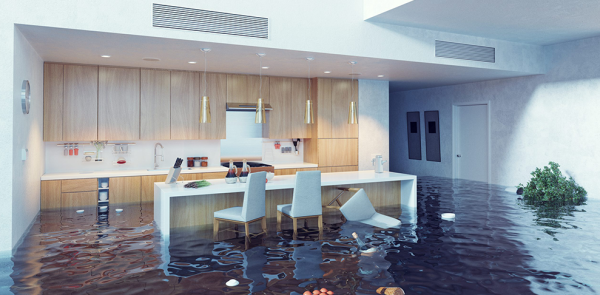Commercial LGR (Low Grain Refrigerant) dehumidifiers are often used in water damage restoration because they are highly effective at removing moisture from the air and surfaces, which can help prevent mold growth and further damage to the affected area.

How do restoration dehumidifiers work?
LGR dehumidifiers work by drawing in moist air, which passes over a cold coil that causes the water vapor to condense into liquid water. The liquid water is then collected in a reservoir or drained away from the unit. Commercial LGR dehumidifiers are particularly effective at removing moisture from air with low humidity levels, which is often the case in water damage restoration scenarios.
Compared to conventional refrigerant dehumidifiers, LGR dehumidifiers are more efficient and can remove a higher volume of water from the air. This makes them ideal for large-scale water damage restoration projects. They are also designed to operate in a wide range of temperatures and humidity levels, making them suitable for use in various settings.
In addition to their effectiveness at removing moisture from the air, LGR dehumidifiers are also designed to be durable and easy to transport. They typically have sturdy wheels and handles, and many models are compact enough to fit in tight spaces.
LGR dehumidifiers are an essential tool for water damage restoration professionals, as they can help to speed up the drying process and prevent further damage to the affected area.
Is it safe to run a dehumidifier all day?
It is generally safe to run a restoration dehumidifier all day, especially when it is being used for water damage restoration purposes. These units are designed to operate continuously for extended periods of time, and many models are equipped with automatic shut-off features that prevent overheating or damage due to excessive use.
However, it is important to follow the instructions and safety guidelines of the dehumidifier manufacturer when using an LGR dehumidifier. This may include periodic cleaning of the air filter and condenser coils, as well as regular maintenance to ensure the unit is operating at peak efficiency.
It is also important to monitor the humidity levels in the affected area and adjust the settings on the dehumidifier as needed to prevent over-drying. Over-drying can lead to other problems such as cracking of the wood and other building materials or damage to electronics.
Additionally, it is recommended to place the LGR dehumidifier in a well-ventilated area to prevent the accumulation of excess heat and moisture around the unit.
It is safe to run an LGR dehumidifier all day as long as proper safety guidelines and maintenance procedures are followed, and the humidity levels in the affected area are monitored regularly to prevent over-drying.

How often should replace a dehumidifier?
The lifespan of a dehumidifier can vary depending on the model, brand, and usage, but generally, a well-maintained and properly used dehumidifier can last for several years. However, there are several factors that can affect the lifespan of a dehumidifier, including the frequency of use, the operating environment, and the quality of the unit.
Here are some general guidelines to follow when considering how often to replace a dehumidifier:
Age: As a general rule of thumb, a dehumidifier with drain hose for basement that is more than 5-7 years old may start to show signs of wear and tear, and it may be time to consider replacing it.
Performance: If you notice that your water mitigation dehumidifier is not performing as well as it used to, or if it is taking longer to remove moisture from the air, it may be time to replace it. You can also test the performance of your dehumidifier by checking the relative humidity levels in the room using a hygrometer.
Energy Efficiency: If your dehumidifier is not energy efficient, it may be costing you more money in electricity bills than it is worth. Upgrading to a newer, more energy-efficient model can help you save money in the long run.
Repairs: If your dehumidifier requires frequent repairs or if the cost of repairs exceeds the cost of a new unit, it may be time to replace it.
In summary, the lifespan of a dehumidifier can vary, but generally, it is recommended to replace it every 5-7 years or when it starts to show signs of wear and tear, reduced performance, or frequent repairs.
Original Source: https://www.preair.com/news/commercial-lgr-dehumidifier-in-water-damage-restoration/
Media Contact
Company Name: Zhejiang Preair Electrical Appliance Industry Co., Ltd.
Email: Send Email
Country: China
Website: https://www.chicominerals.com/
